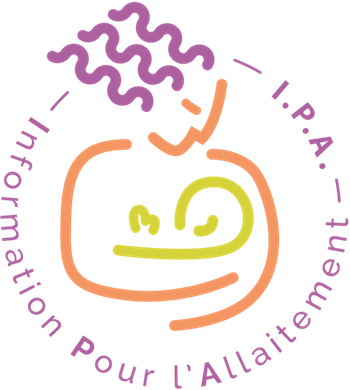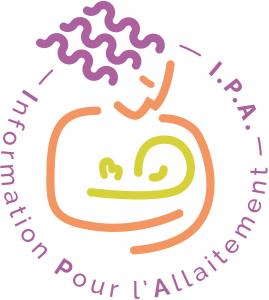Catégories
Documents disponibles dans cette catégorie (39)
 Ajouter le résultat dans votre panier Faire une suggestion Affiner la recherche
Ajouter le résultat dans votre panier Faire une suggestion Affiner la rechercheArticle : texte imprimé
texte imprimé
La première partie rassemble des éléments sur l'histoire de l'allaitement en France et l'apparition des lois concernant les femmes actives. La deuxième fait un rappel des bénéfices de l'allaitement maternel qui sont nombreux et bien décrits dans[...]texte imprimé
Au cours de ce travail nous avons rappelé dans une première partie la physiopathologie de la lactation et les caractéristiques du lait de femme par rapport au lait de vache, et présenté dans une deuxième partie les résultats d'une enquête réalis[...]texte imprimé
Une enquête prospective a été menée auprès de 685 femmes ayant accouché à la maternité du CHU de Caen entre le 1er septembre 2002 et le 31 décembre 2002. Les facteurs liés à l'allaitement ont été identifités en analyse univariée puis multivariée[...]texte imprimé
Pourquoi la France est-elle un des pays au monde où les mères allaitent le moins leur nouveau-né ? Pourquoi sont-elles si nombreuses à interrompre leur allaitement précocement ? Et pourquoi ont-elles souvent tant de difficultés dans sa mise en r[...]texte imprimé
Etude descriptive des pratiques et opinions de médecins généralistes autour de l'allaitement maternel, qui se rapproche d'une enquête CAP(Connaissances-Attitudes-Pratiques), basé sur un questionnaire cherchant à faire le point sur une conduite e[...]texte imprimé
Enquête rétrospective analysant le discours de seize mères qui ont allaité leur premier enfant né en 2002. Elles ont accouché dans une des quatre maternités Bas-Normandes. Les mères sont très attachées à leur choix d'allaiter, l'enjeu pour elles[...]Article : texte imprimé
Mishel Unar-Munguia, Auteur ; Gabriela Torres-Mejia, Auteur ; M. Arantxa Colchero, Auteur |Background: Breastfeeding reduces women’s risk of breast cancer. Since exclusive breastfeeding has a stronger hormonal effect, it could theoretically result in a greater reduction in breast cancer risk than any breastfeeding mode. No meta-analy[...]Article : texte imprimé
S Fanello, Auteur ; I Moreau-Gout, Auteur ; JP Cotinat, Auteur |Objectif- Le but de ce travail a été de comprendre les motivations et les obstacles dans le choix ou la poursuite de l'allaitement maternel. Population et méthodes - L'enquête a été menée auprès de 308 femmes ayant accouché depuis au moins trois[...]Article : texte imprimé
The role of the father has been identified as one of the strongest influences on the initiation and duration of breastfeeding by mothers in the United States. This report describes a corporate lactation program that focuses on promoting breastfe[...]Article : texte imprimé
Carol L. Wagner, Auteur ; Sarah N. Taylor, Auteur ; Barbara Haase, Auteur |In designing longitudinal lactation research studies, certain factors must be taken into account that are necessary for the generation of meaningful data. Perhaps more like longitudinal childhood research studies in terms of ongoing changes that[...]texte imprimé
Dans une première partie, nous avons rappelé brièvement les bienfaits de l'allaitement maternel pour l'enfant et pour la mère. Et à la lecture des recommandations de l'OMS et des sociétés savantes sur la durée d'allaitement, nous avons étudié la[...]texte imprimé
Mary J. Renfrew, Auteur ; Mike W. Woolridge, Auteur ; Helen Ross McGill, Auteur | The Stationary Office | 2000This book reviews the research that examines the factors that enable or interfere with women continuing to breastfeed, beyond the initial post natal period. Helpful strategies are identified and evidence-based recommendations are made.Article : texte imprimé
Cette étude a été réalisée au CHU de Rennes, afin de déterminer le taux d'allaitement maternel des nouveau-nés hospitalisés dès les premiers jours de vie, ainsi que les facteurs associés au choix d'allaiter ou non dans ces conditions de transfer[...]texte imprimé
La situation de l'allaitement maternel. Présentation et résultats de l'étude régionale : facteurs influençant la poursuite de l'allaitement maternel dans la région Rhône-Alpes.texte imprimé
Dans une première partie nous ferons le point sur la situation de la France, puis nous présenterons les grandes associations de soutien à l'allaitement maternel et celles existant sur Grenoble. Enfin, dans une revue de la littérature, nous verro[...]Article : texte imprimé
Background The need for donor human milk has accelerated both locally and globally. To remain sustainable, human milk banks need to maintain effective recruitment including frequent donations of adequate volumes. Research aims To determine [...]Article : texte imprimé
Elif Yilmaz, Auteur ; Yilmaz Zehra, Auteur ; Hatice Isik, Auteur |Objective: This study aimed to determine the early initiation time of breastfeeding and exclusive breastfeeding (EBF) rates during the first 6 months and the main factors affecting EBF practice in Turkish adolescent mothers. Study Design and [...]Article : texte imprimé
Karen C. Schliep, Auteur ; Daniel Denhalter, Auteur ; Lisa H. Gren, Auteur |"Introduction: Hospitals are in a unique position to promote, protect, and support breastfeeding. However, the association between in-hospital events and breastfeeding success within population-based samples has not been well studied. Materials[...]Article : texte imprimé
MT Tarkka, Auteur ; M Paunonen, Auteur ; P Laippala, Auteur |The aim of the reported study was to gain information on those factors which contribute to the success of breast feeding in first-time mothers when the child is 3 months old. The study is part of a wider longitudinal project which follows-up the[...]Article : texte imprimé
NB Bar-Yam, Auteur ; L Darby, Auteur |Research on breastfeeding support has consistently identified fathers as an important source of support in the decision to breastfeed and in its implementation. The literature indicates that fathers influence four aspects in particular: the brea[...]texte imprimé
Etude concernant le choix et la durée de l'allaitement maternel ayant pour objectifs d'estimer la prévalence et la durée d'allaitement maternel, d'identifier des facteurs liés à l'allaitement maternel et à sa durée et notamment d'évaluer l'influ[...]Article : texte imprimé
LW Kuan, Auteur ; M Britto, Auteur ; J Decolongon, Auteur |Objective : To identify and characterize health care system factors that contribute to successful breastfeeding in the early postpartum period.Article : texte imprimé
Wendy Brodribb, Auteur ; Anthony Bruce Fallon, Auteur ; Desley Hegney, Auteur |"The aims of this article are to outline the reasons Australian women give for initiating breastfeeding, identify unique predictors for these reasons, and use principal components factor analysis to determine factors that influence a woman's dec[...]Article : texte imprimé
Breastfeeding rates in the United States continue to rise, but still fall short of goals for both initiation and continuation. Many different maternal demographic characteristics have been identified as risk factors for not breastfeeding, but th[...]Article : texte imprimé
MS Clements, Auteur ; EA Mitchell, Auteur ; SP Wright, Auteur |Factors associated with not exclusively breastfeeding at discharge from the obstetric hospital and with duration of breastfeeding were examined in 700 randomly sampled infants. Obstetric records were examined in 97.7% of the subjects and 73.0% o[...]Article : texte imprimé
Article : texte imprimé
S Arora, Auteur ; C McJunkin, Auteur ; J Wehrer, Auteur |OBJECTIVE: To determine factors influencing feeding decisions, breastfeeding and/or bottle initiation rates, as well as breastfeeding duration. SETTING: A family medicine practice of a 530-bed community-based hospital in northwestern Pennsylvani[...]Article : texte imprimé
Article : texte imprimé
Pawin Puapornpong, Auteur ; Panwara Paritakul, Auteur ; Maysita Suksamarnwong, Auteur |Background: Nipple pain is the most common complaint of breastfeeding mothers during the immediate postpartum period. Persistent nipple pain is associated with low breastfeeding rate at 6 months postpartum. Objective: To further explore the i[...]Article : texte imprimé
MT Tarkka, Auteur |BACKGROUND: Maternal role attainment is largely a cognitive and social process that is influenced by the cultural and family context and the mother's and child's traits and characteristics. Feedback from a social network is important to validate[...]Article : texte imprimé
Breastfeeding has been discussed as a critical human adaptation (Sellen, 2007), an optimal method of infant feeding (American Academy of Pediatrics, 2012), personalized medicine (Victora et al., 2016), a behavior that elicits human connection (F[...]texte imprimé
Ce travail a pour objectif de mieux connaître, à partir d'entretiens semi directifs menés auprès de 36 femmese vivant dans la précarité, les modalités du choix de leur mode d'alimentation, et l'influence des professionnels de santé et de l'entou[...]Article : texte imprimé
Despite widespread awareness of the health benefits for both mothers and babies we are far from achieving universal breastfeeding. Breastfeeding rates globally are lower than recommended levels and there are concerns that some global breastfeedi[...]Article : texte imprimé
Lee Shephered, Auteur ; Cherokee Walbey, Auteur ; Brian Lovell, Auteur |Background: Previous research has suggested that exclusive breastfeeding is likely to be predicted by social-cognitive variables and fear. However, there is little research assessing the role of regret and self-conscious emotions (e.g., pride a[...]Article : texte imprimé
Yeon K. Bai, Auteur ; Lauren M Dinour, Auteur |Background: A proper assessment of multidimensional needs for breastfeeding mothers in various settings is crucial to facilitate and support breastfeeding and its exclusivity. The theory of planned behavior (TPB) has been used frequently to mea[...]Article : texte imprimé
Alison Stuebe, Auteur |Breastfeeding is a core component of population health. All major medical organizations recommend 6 months of exclusive breastfeeding, followed by continued breastfeeding for at least 12 months, and longer as mutually desired by parent and child[...]



















